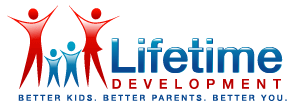
The term ‘special educational needs‘ has a legal definition, referring to children who have learning problems or disabilities that make it harder for them to learn than most children of the same age.
In Hong Kong, under the prevailing government policy, children with severe or multiple disabilities attend special schools where they are provided with intensive support services. Other students with SEN are placed in ordinary schools where they can learn with their peers for the full benefits of education. Parents can apply for admission to primary schools for their children through the current school places allocation system. Schools are advised to implement the Whole School approach to integrated education to cater for student differences effectively and enhance the effectiveness of education as a whole.
8 types of SEN students are placed in ordinary schools:
1. Specific Learning Difficulties (SpLD)
SpLD in reading and writing, also known as dyslexia, is the most common type of SpLD. Students with SpLD, despite having normal intelligence and having received formal instructions, are unable to read, spell and dictate words accurately and fluently. Generally speaking, they display the following characteristics:
- do better in oral than written expression;
- cannot read with fluency; mispronounce words or forget
- the pronunciation;
- cannot spell words even after making considerable effort;
- omit or add unnecessary strokes to the Chinese characters when copying;
- reverse letters or characters or write the “mirror images” of letters or characters; and
- tire easily and need to make greater effort in completing reading and writing assignments.
2. Intellectual Disability
In comparison with their peers, the global development of students with intellectual disability is delayed and they have marked disabilities in cognitive functioning in the following areas:
- weak in abstract and logical thinking;
- weak in memory;
- have short attention span and are easily distracted;
- have weak language expression, limited vocabulary, or articulation defects;
- weak in gross motor and eye-hand co-ordination which affect their daily self-care; and
- have weak social skills.
3. Autism Spectrum Disorders (ASD)
Usually, children display autistic symptoms before the age of three. These children show marked disabilities in social development, language communication and behaviour adjustment.
- Social development:These children live in their own world. They are weak in interpreting verbal messages and facial expressions and do not consider things from other people’s perspective. Therefore, it is necessary to support them in cultivating friendship with their peers and grasping simple rules of social interaction;
- Language communication : They are slow in verbal development and their speech is monotonous, repetitive or echolalic. Thus the teacher should give them simple, explicit and direct instructions and explain every step of the learning task so that the students can follow more easily; and
- Behaviour adjustment : These students often insist on following certain routines, e.g. taking buses of the same route or taking the same seat, or refusing to change certain daily habits. Teachers can assist them to accept changes, e.g. by informing them of changes well in advance to prevent undue anxiety. Rehearsals for the change can also be arranged as required.
4. Attention Deficit/Hyperactivity Disorder
Students usually have the following three characteristics :
- Inattention : They are often distracted by irrelevant signs and sounds. They also fail to work in a systematic way or pay attention to details. Moreover, they often make careless mistakes;
- Hyperactivity : They cannot remain seated in class and usually keep fidgeting or fiddling with objects around them; and
- Impulsivity : They lack patience, are impulsive and often act without considering the consequences. They blurt out answers before the questions are completed. Moreover, they often interrupt others, cannot remain in line with the queue, and are unable to follow through the instructions.
5. Physical Disability
- Cerebral palsy, epilepsy, spina bifida, muscular dystrophy and developmental co-ordination disorder are common types of physical disabilities which affect students’ motor co-ordination, speech, writing and daily activities.
6. Visual Impairment (VI)
- Visual impairment (VI) refers to the visual acuity, of 6/18 or below, taking measurement from the eye with better vision upon wearing spectacles or after refractive correction surgery. Visual impairment can be classified as mild low vision, moderate low vision, severe low vision or total loss of vision.
7. Hearing Impairment (HI)
- There are three major types of hearing impairment, namely conductive, sensorineural, and mixed. The level of impairment can be further classified into mild, moderate, moderately severe, severe and profound.
8. Speech and Language Impairments (SLI)
There are four common types of speech and language difficulties :
- Defective articulation – substitution or omission of sounds or other error patterns that cause unclear speech. For example, “seem” is mispronounced as “deem”, and “tall” as “call”, etc;
- Language problems – inability to understand and/or use language at an age-appropriate level;
- Fluency problems (commonly known as stuttering) – difficulty in initiation of speech or interruption of the speech flow; and
- Voice problems – including hoarseness, loss of voice, inappropriate pitch or volume control, hypernasality or hyponasality during speech acts.
Extracted from:
http://www.edb.gov.hk/attachment/en/edu-system/special/support/wsa/ie%20guide_en.pdf
